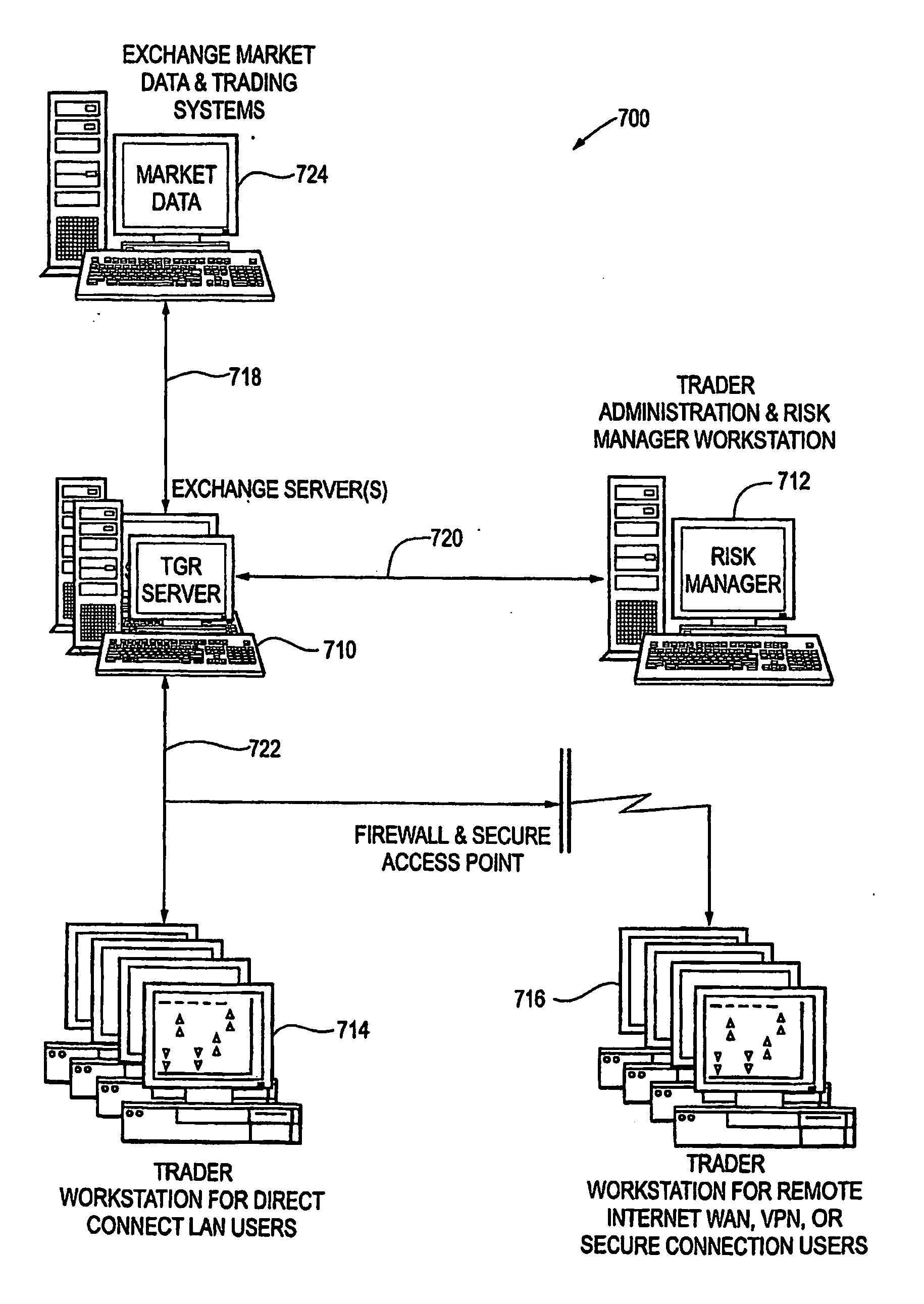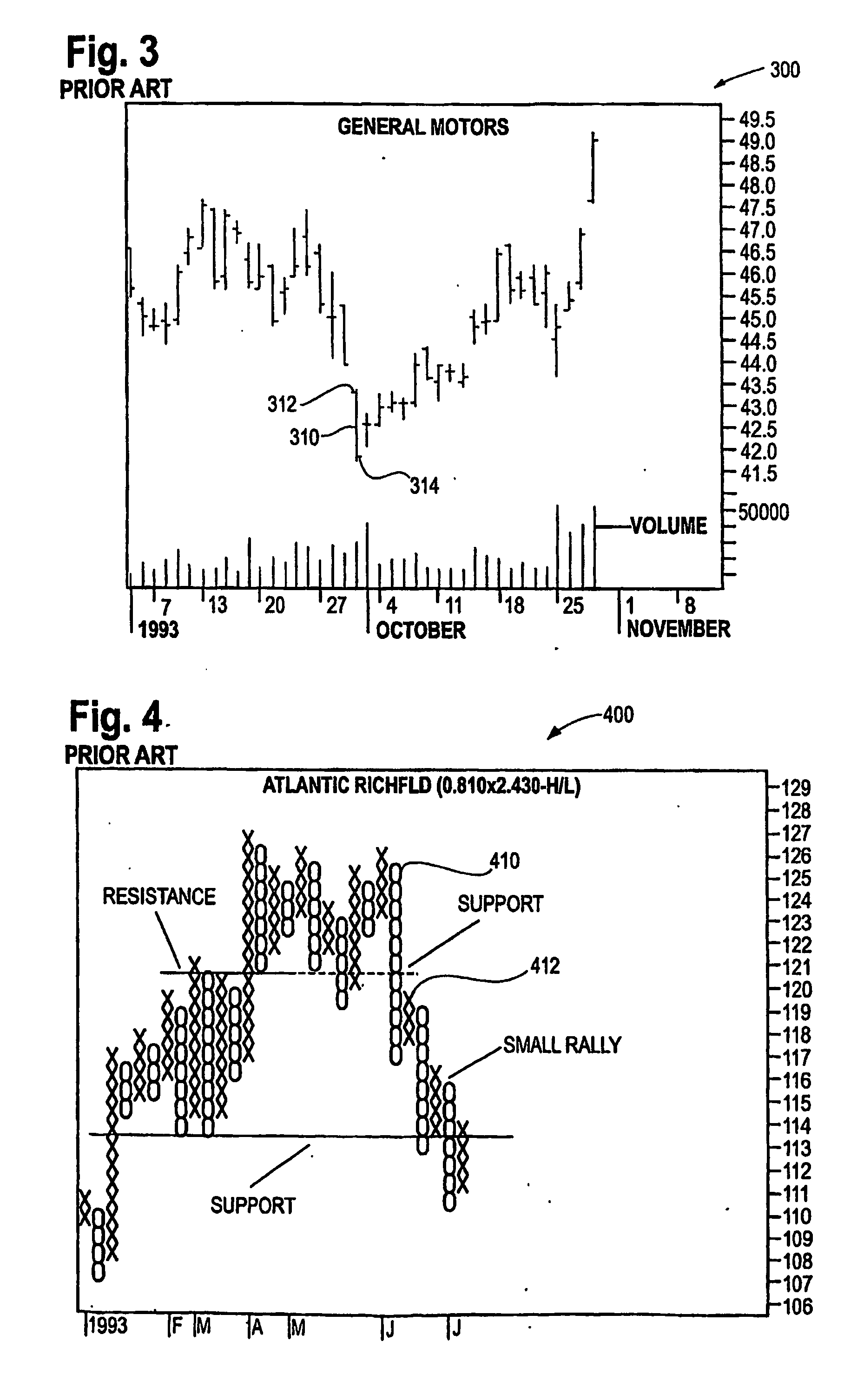System and method for analyzing and displaying security trade transactions
a technology of securities and transactions, applied in the field of systems and methods for analyzing and displaying securities transactions, can solve the problems of not providing sufficient detail about the transactions, transaction reports experienced significant delays, and information reported was typically quite limited, so as to speed up the interpretation of market activity, increase the probability of making a profit from buying low, and quickly decide
- Summary
- Abstract
- Description
- Claims
- Application Information
AI Technical Summary
Benefits of technology
Problems solved by technology
Method used
Image
Examples
Embodiment Construction
[0058]FIG. 7 is a block diagram depicting an overview of a system 700, constructed according to an aspect of the present invention, for analyzing and displaying security trade transactions, and for receiving from a user security trade orders. The system 700 comprises at least one exchange server 710, at least one trader administration and risk manager workstation 712 coupled to the exchange server 710, at least one trader workstation 714, 716 also coupled to the exchange server 710, appropriate software described further herein, and appropriate telecommunications and networking facilities 718, 720, 722 to allow communications among the servers and workstations. The exchange server (“Server”) 710 interfaces end-users with exchange market data and order routing capabilities. The trader workstations 714, 716 are client devices that provide end-user services. The administration and risk manager workstation 712 is used to set-up trader accounts for the system, set trading controls, and t...
PUM
 Login to View More
Login to View More Abstract
Description
Claims
Application Information
 Login to View More
Login to View More - R&D
- Intellectual Property
- Life Sciences
- Materials
- Tech Scout
- Unparalleled Data Quality
- Higher Quality Content
- 60% Fewer Hallucinations
Browse by: Latest US Patents, China's latest patents, Technical Efficacy Thesaurus, Application Domain, Technology Topic, Popular Technical Reports.
© 2025 PatSnap. All rights reserved.Legal|Privacy policy|Modern Slavery Act Transparency Statement|Sitemap|About US| Contact US: help@patsnap.com



